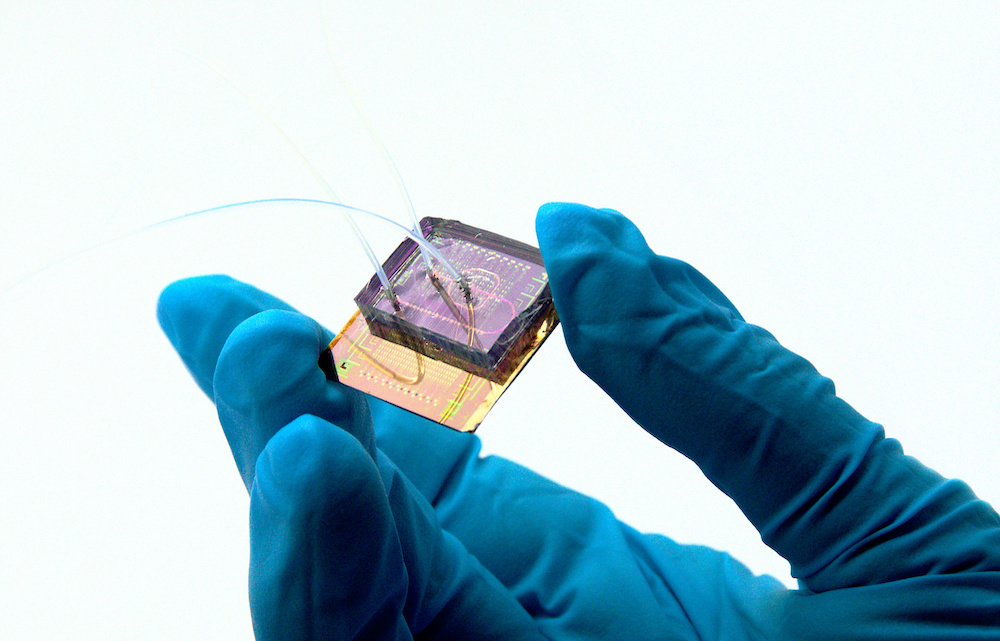
We develop miniaturized, biocompatible sensor platforms that bring cutting-edge nanotechnology into real-world applications. By integrating advanced materials, microfluidics, and smart data analysis, our devices enable label-free, continuous monitoring of biological and chemical parameters—even in vivo. From healthcare diagnostics, such as infectious disease detection, cancer screening, hormone-level monitoring, or stress biomarker assessment, to environmental monitoring, our goal is to transform sensor innovations into reliable, user-friendly tools that make a tangible impact.
The field of sensor development has evolved from early glucose meters in the 1960s to modern point-of-care devices operated by patients themselves. The next step is clear: ultra-sensitive, integrated platforms capable of continuous in vivo measurements.
In our work, we combine top-down and bottom-up fabrication to create nanomaterials and nanostructures serving as highly sensitive transducer surfaces. We employ electrical transduction mechanisms for maximum miniaturization, enabling compact sensor arrays for real-time, label-free analysis.
To ensure performance and applicability, we integrate:
• Materials science for tailored functionality and stability.
• Microfluidics for precise sample handling and parallelized measurements.
• Biocompatibility engineering for safe, long-term operation in biological systems.
By covering the full chain from material synthesis to device validation, we aim to not only detect target analytes but also uncover new sensing phenomena at the nanoscale. Our vision is to bridge laboratory breakthroughs with real-world needs in healthcare, environmental monitoring, and beyond.
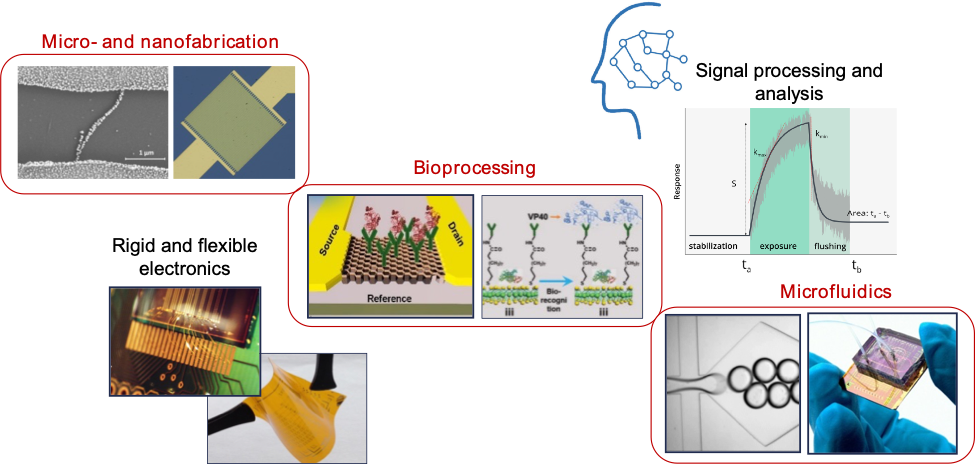
What we build
• Electronic sensors: field-effect transistors and chemiresistors based on 1D/2D materials for label-free, continuous readout.
• Electrochemical sensors: impedance and amperometric platforms optimized for portability and multi-sensor arrays.
• Form factors: rigid and flexible substrates; compact integration with microfluidics for controlled delivery, mixing, and parallelization.
How we achieve selectivity & sensitivity
We engineer receptor-functionalized surfaces tailored to specific biomarkers, achieving very low detection limits. We pair this with signal processing, advanced data analysis, and machine learning to boost performance and reliability under realistic conditions.
Ready for the body
A core focus is biocompatibility: we incorporate suitable coatings and materials so sensors can operate stably in biological environments, advancing toward continuous in vivo monitoring while maintaining sensitivity and selectivity.
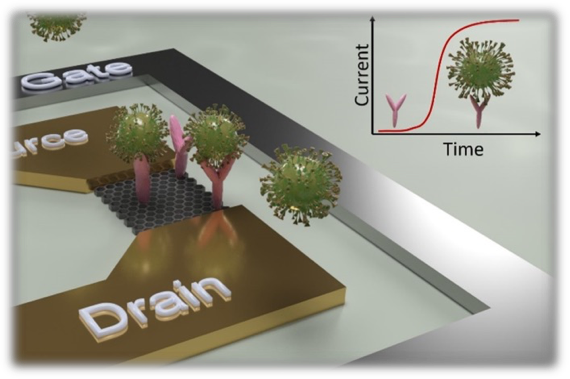




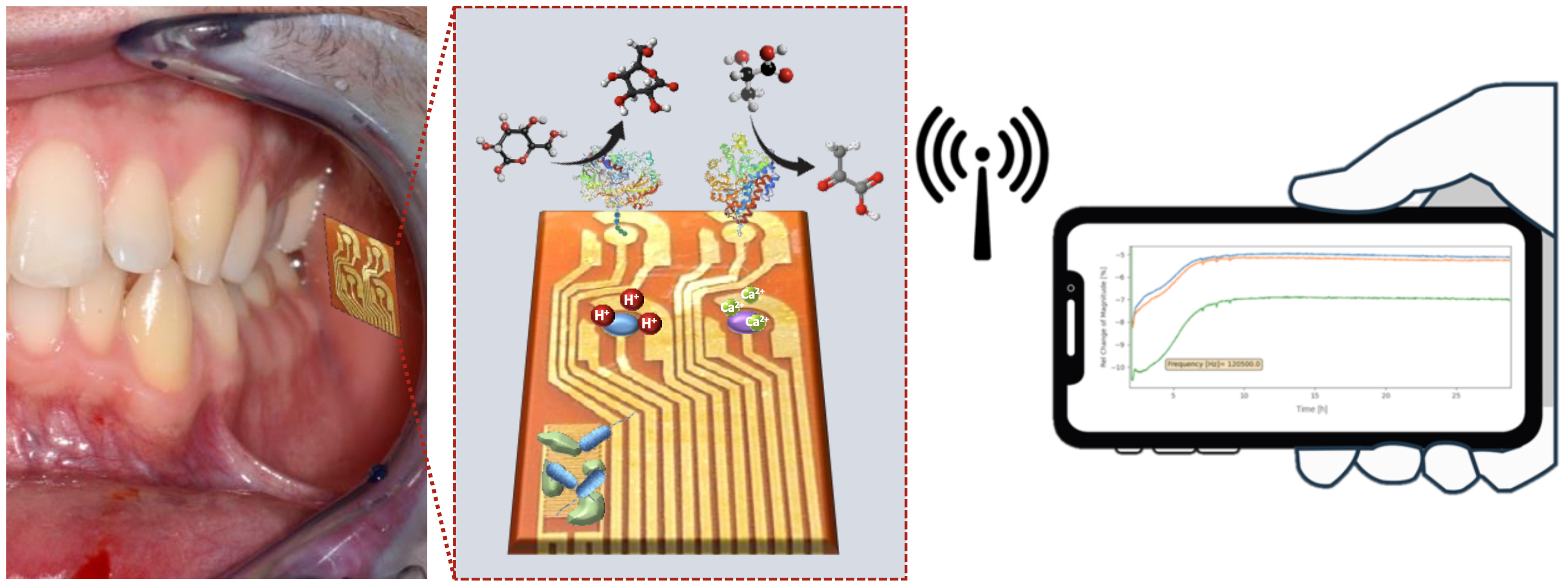



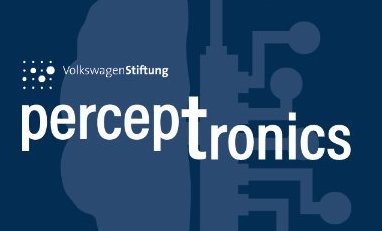



















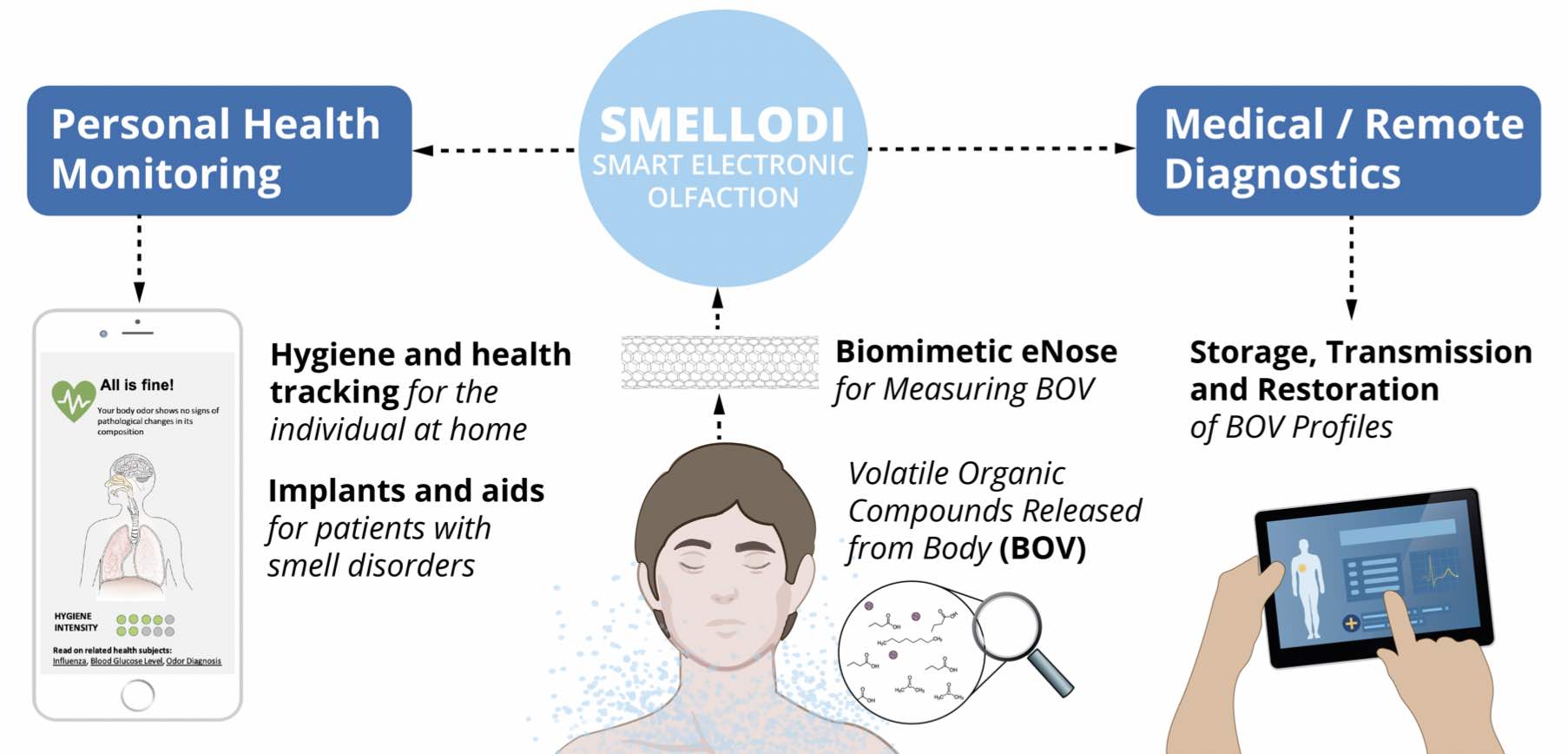

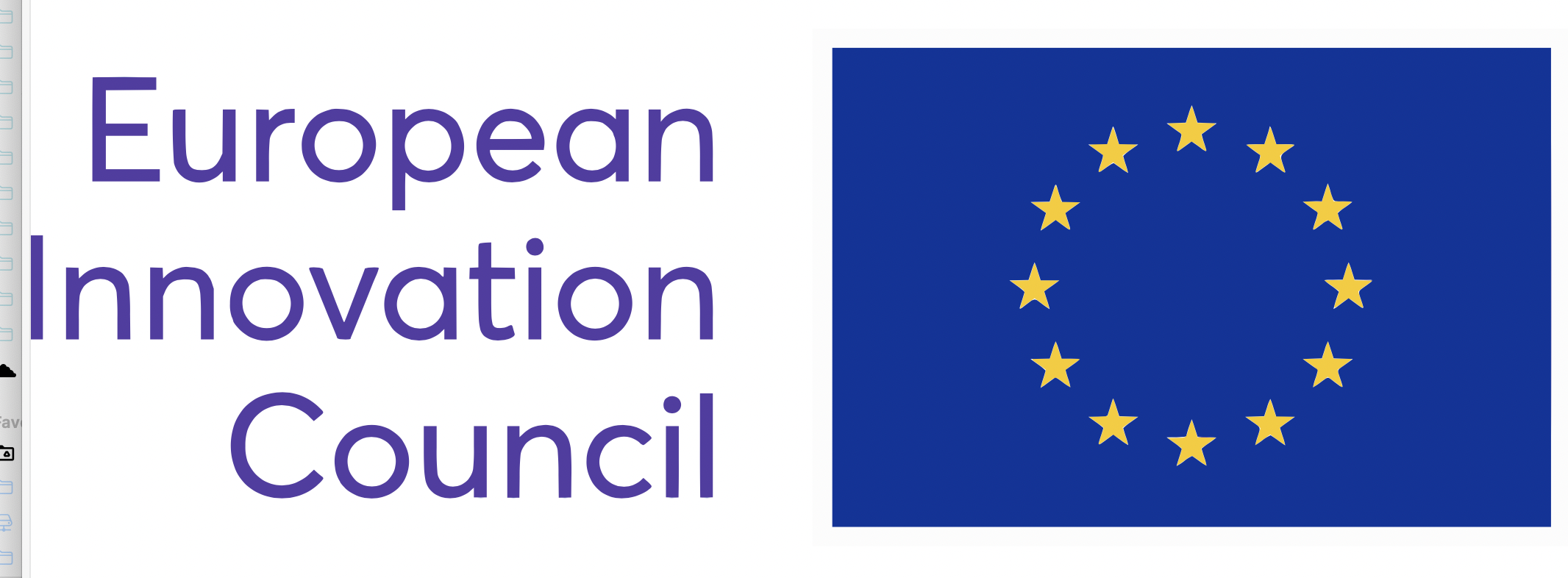





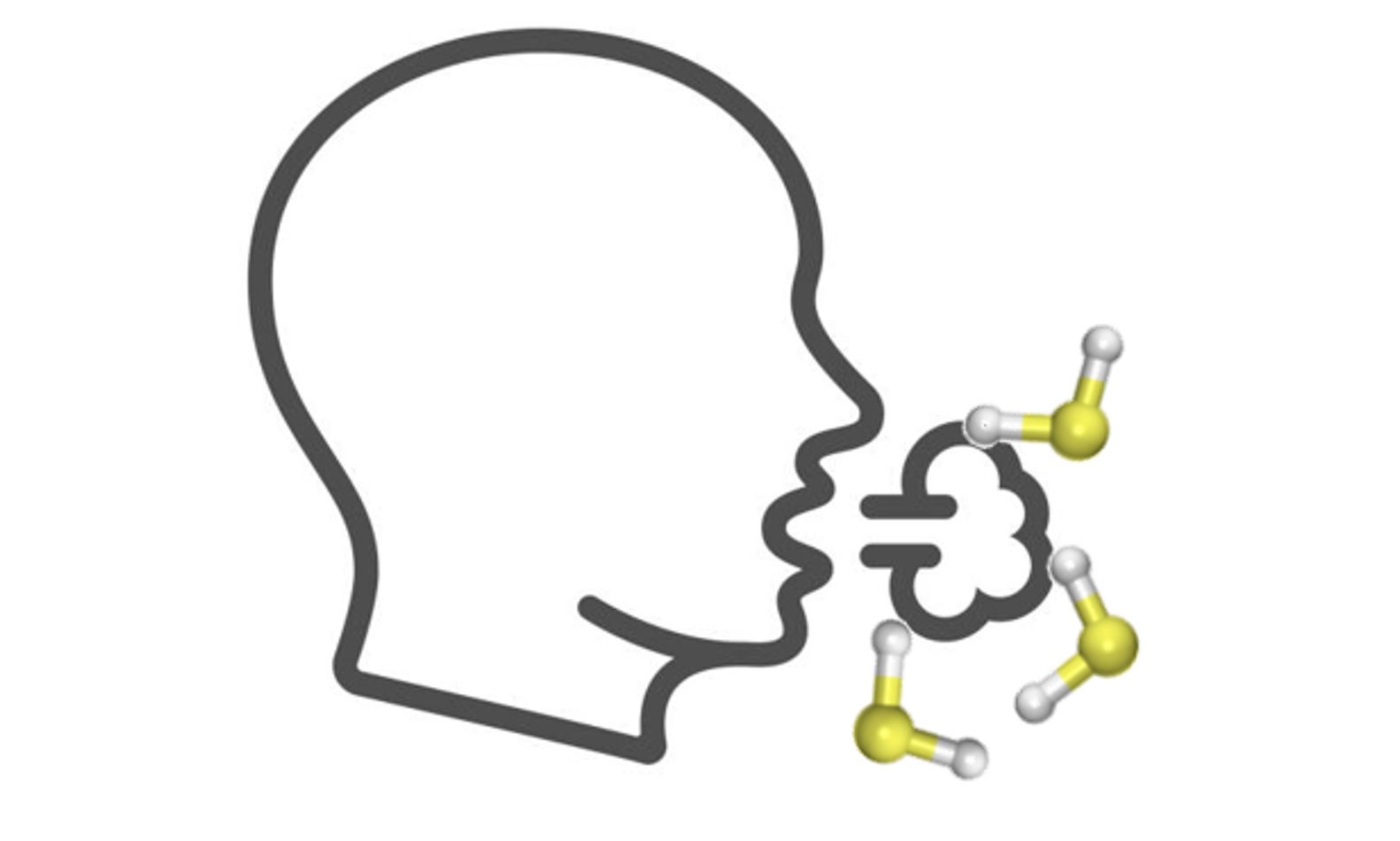





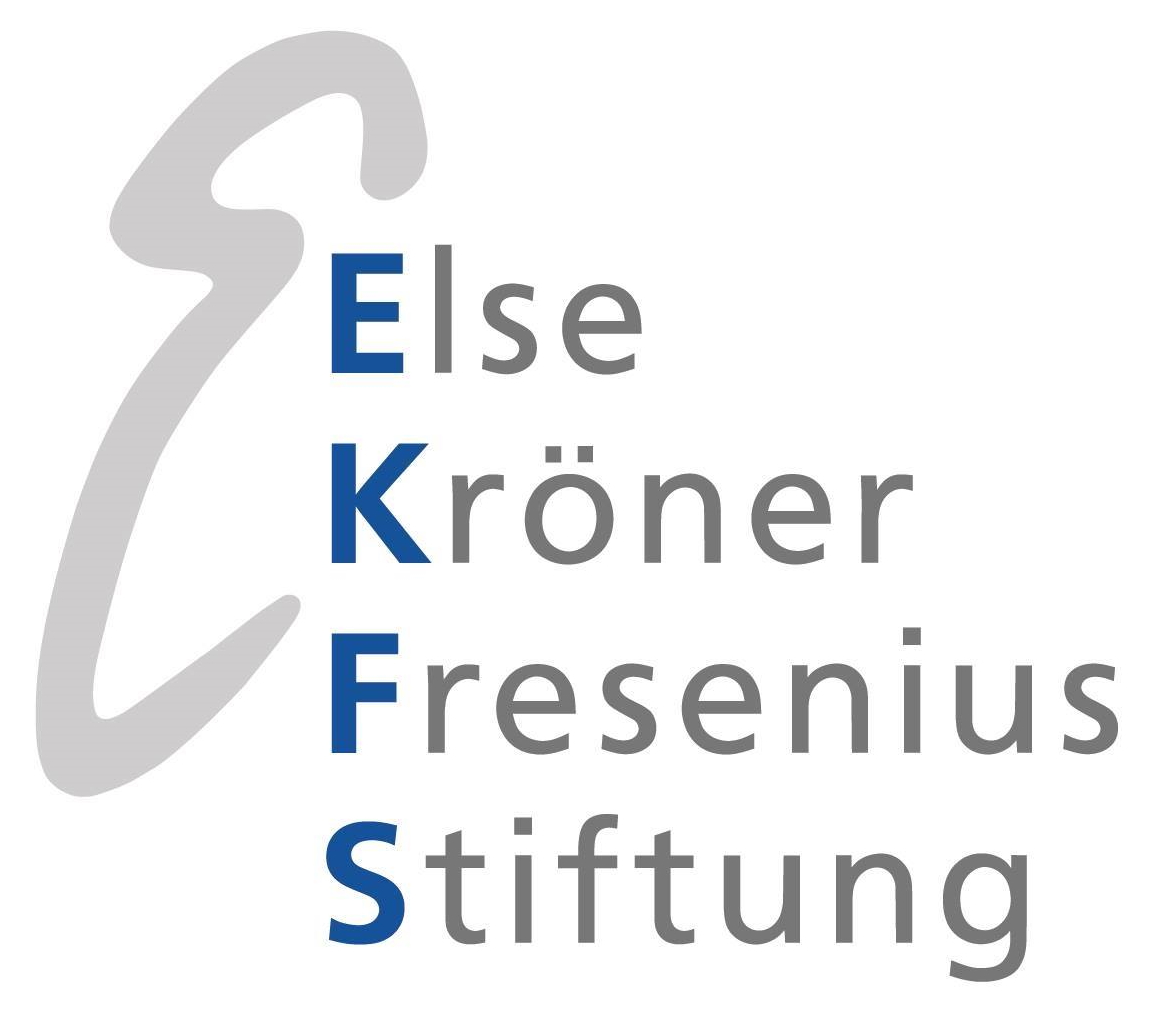

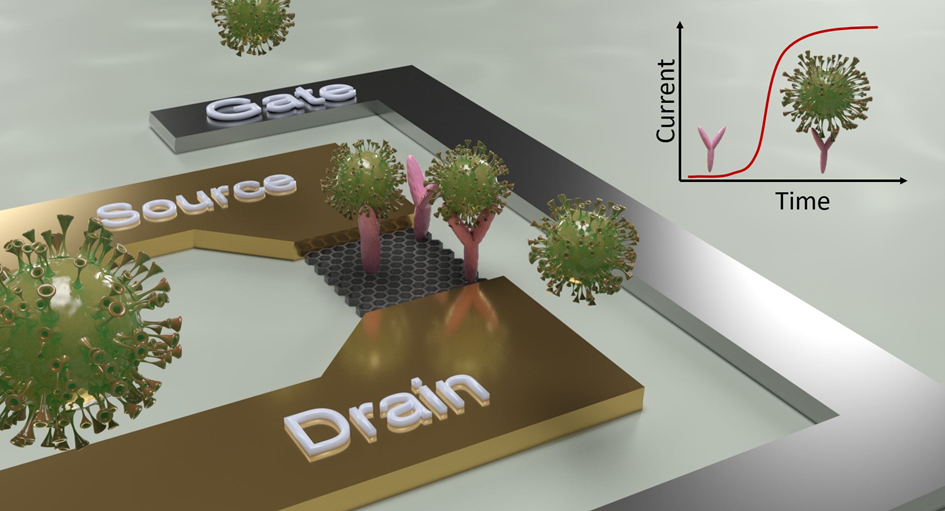



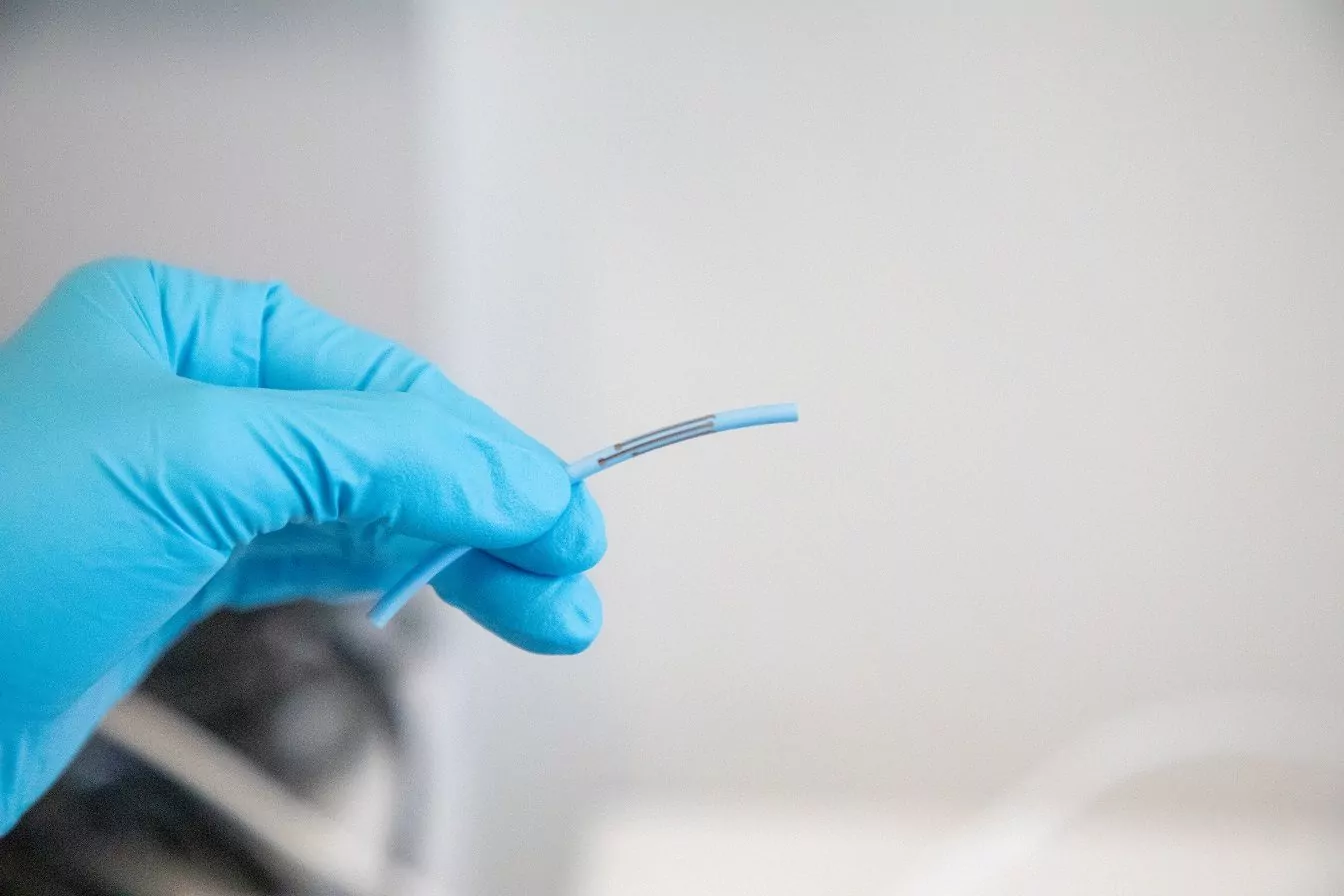



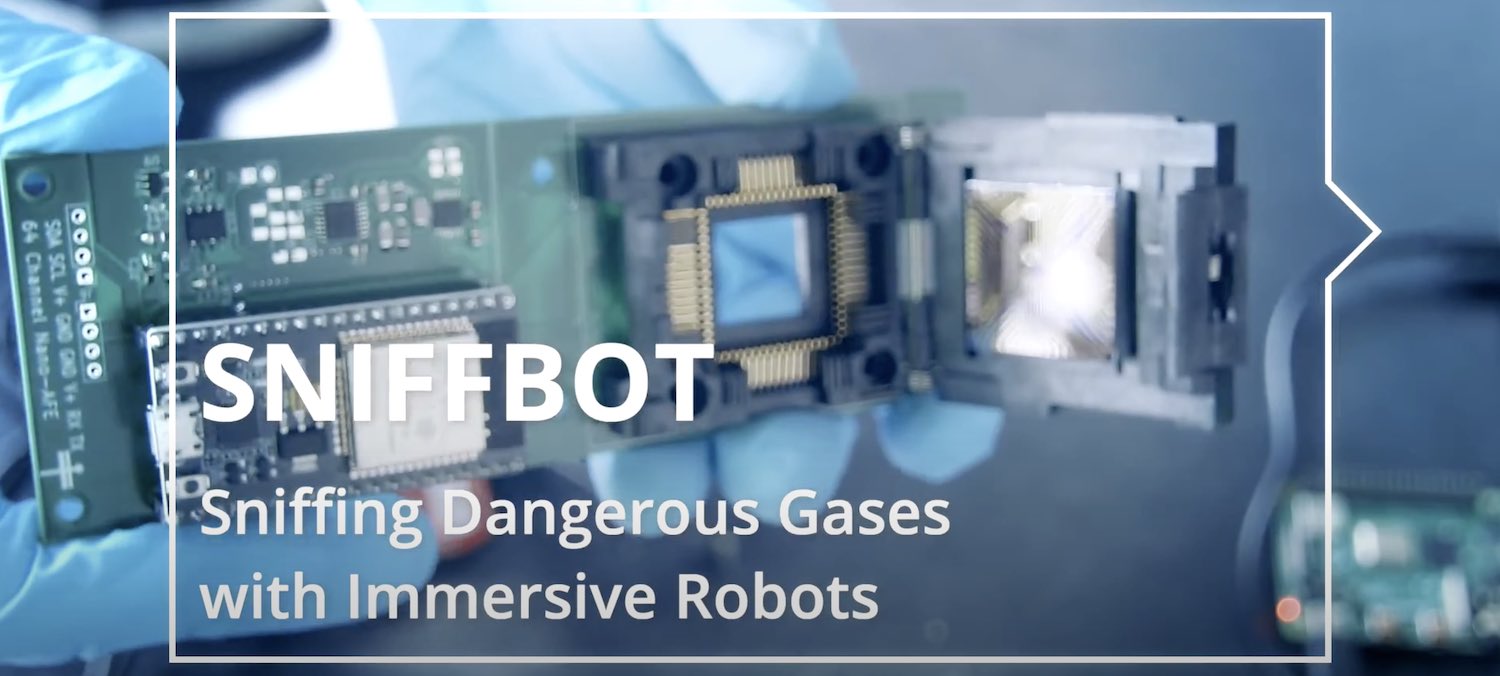



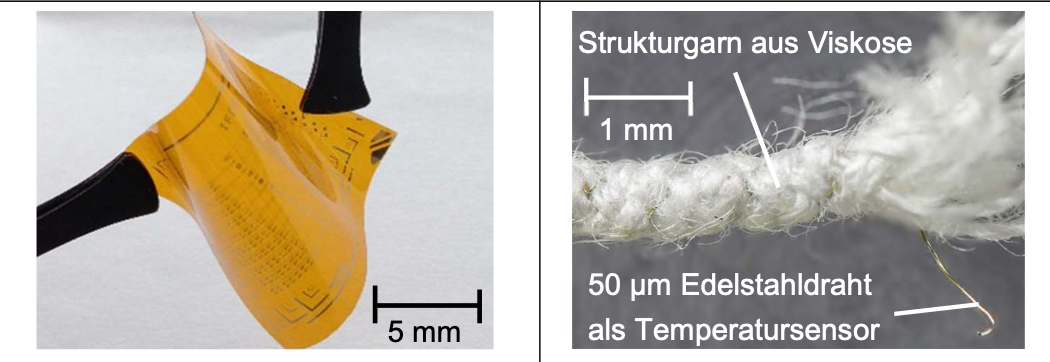



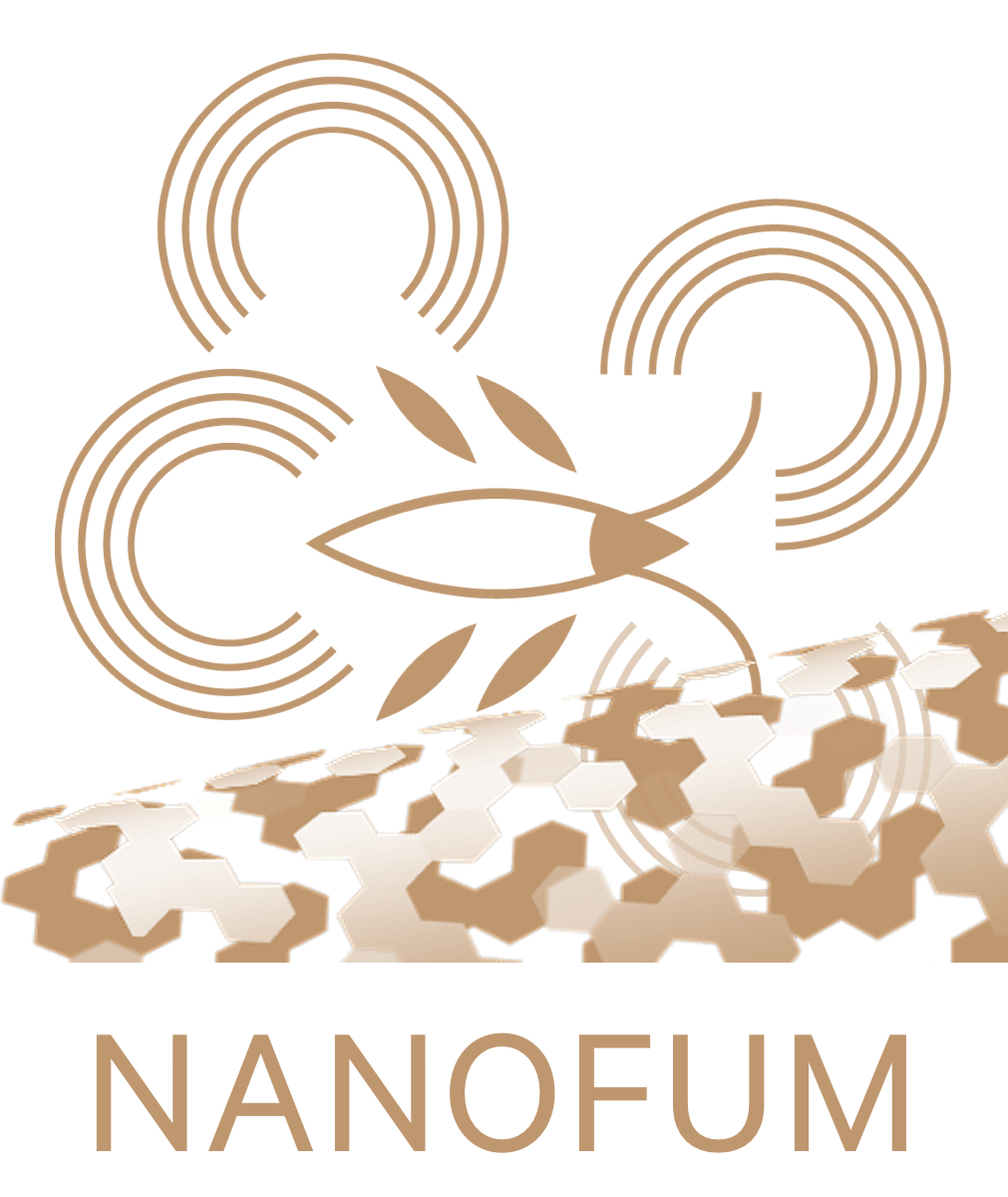





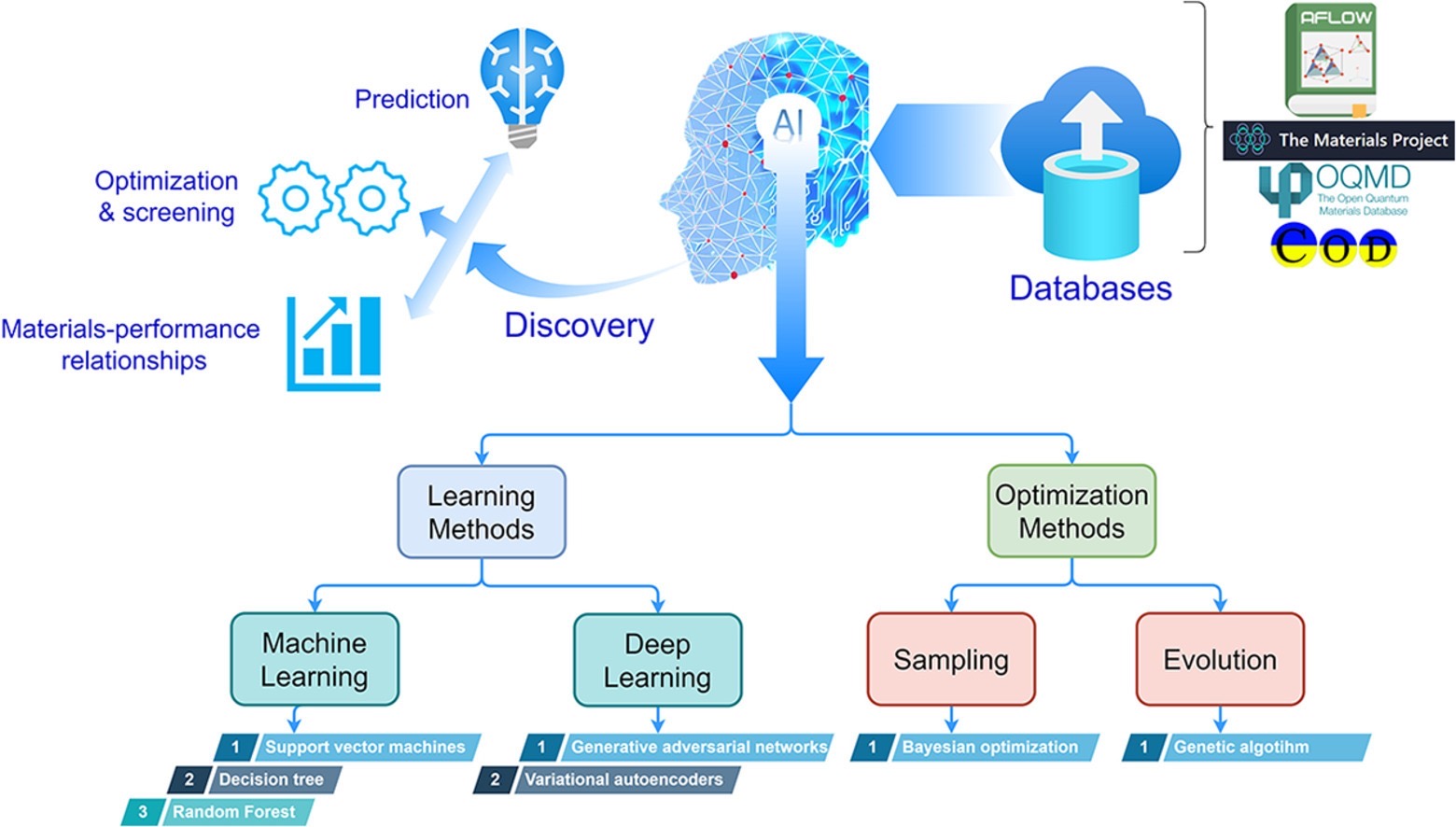















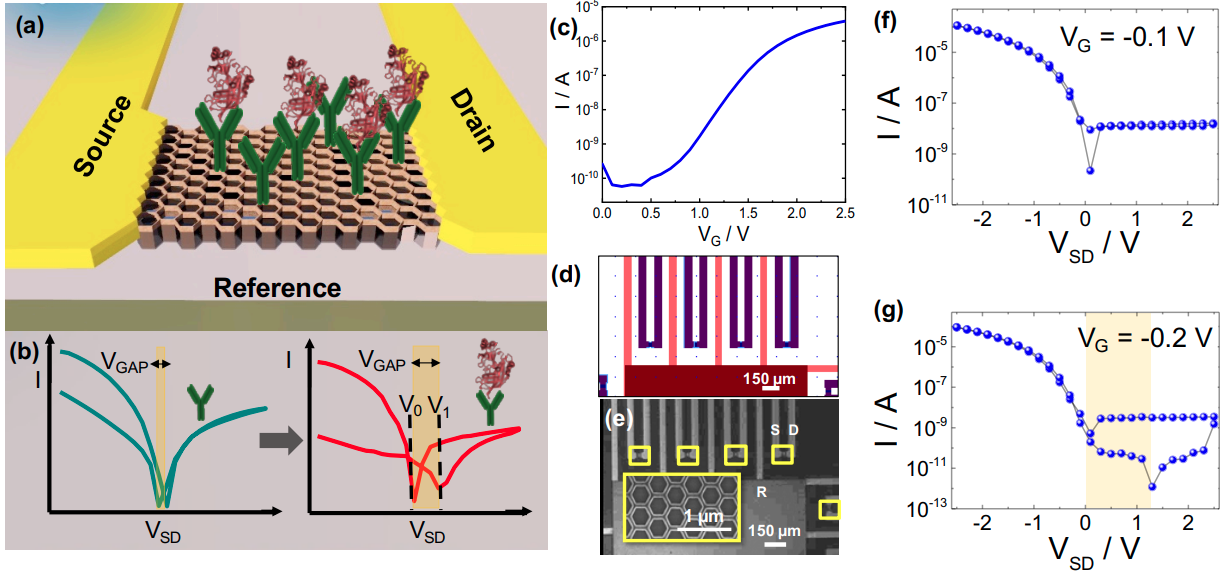

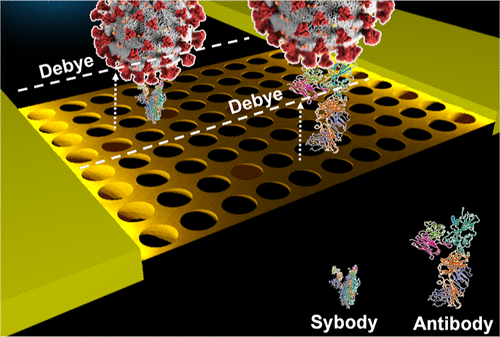

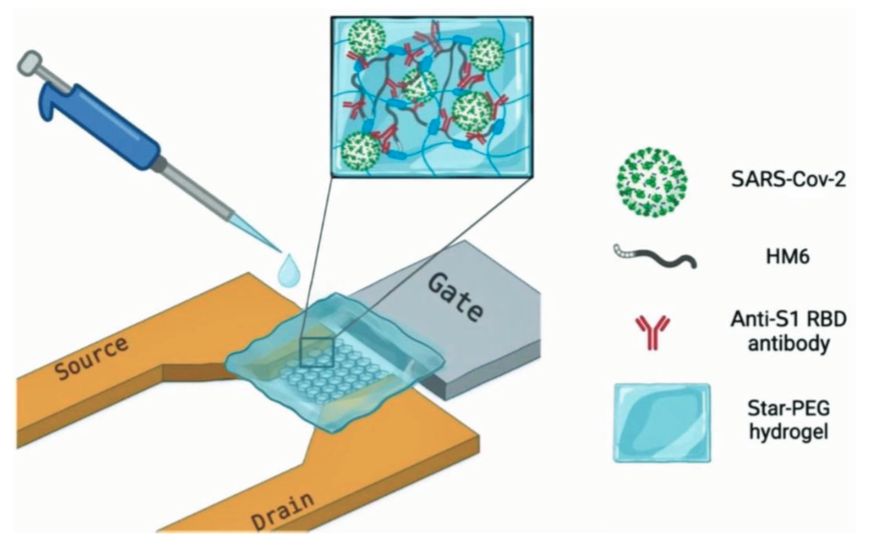

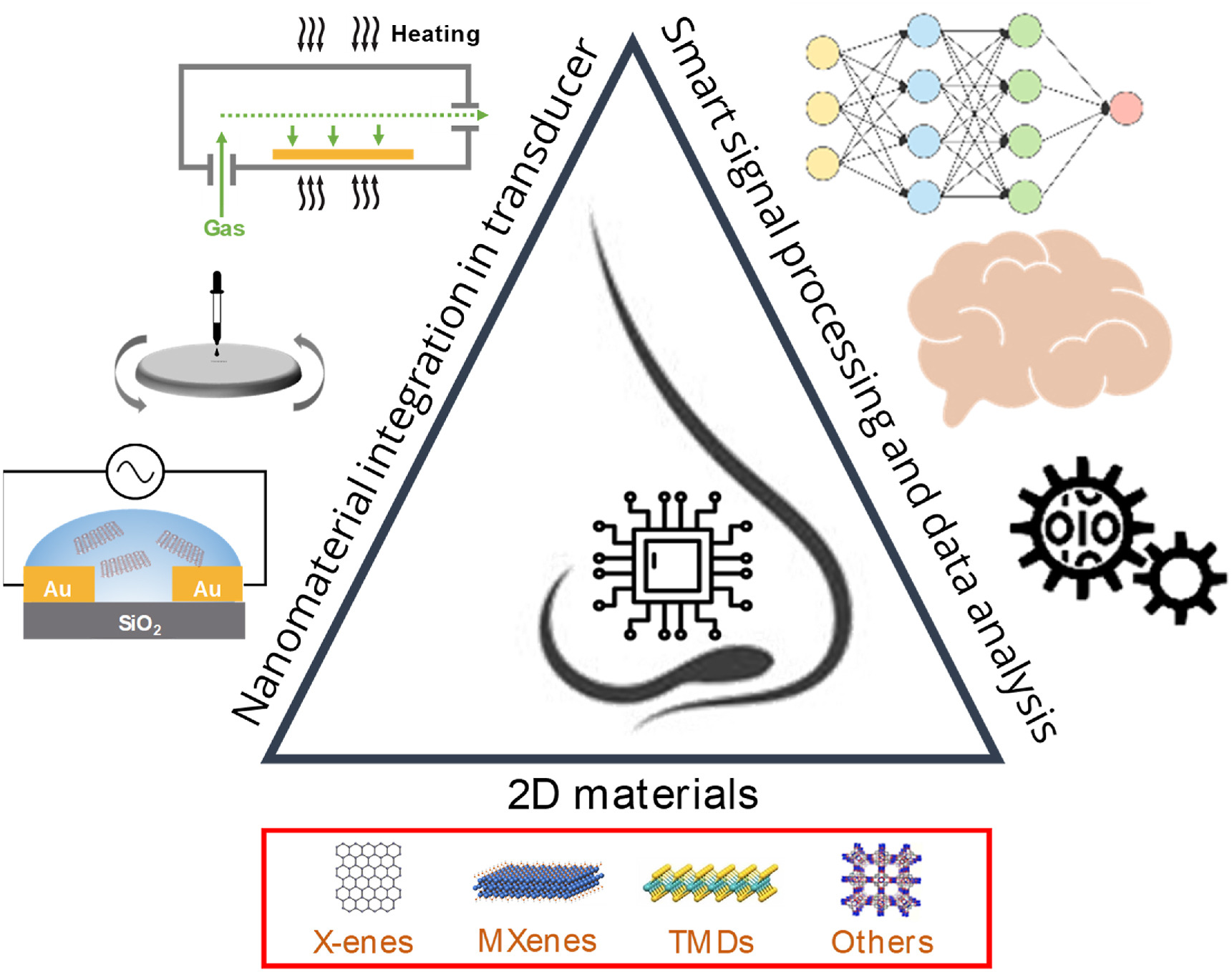

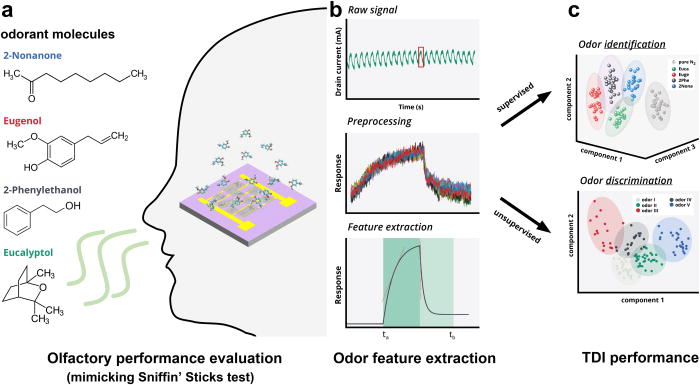



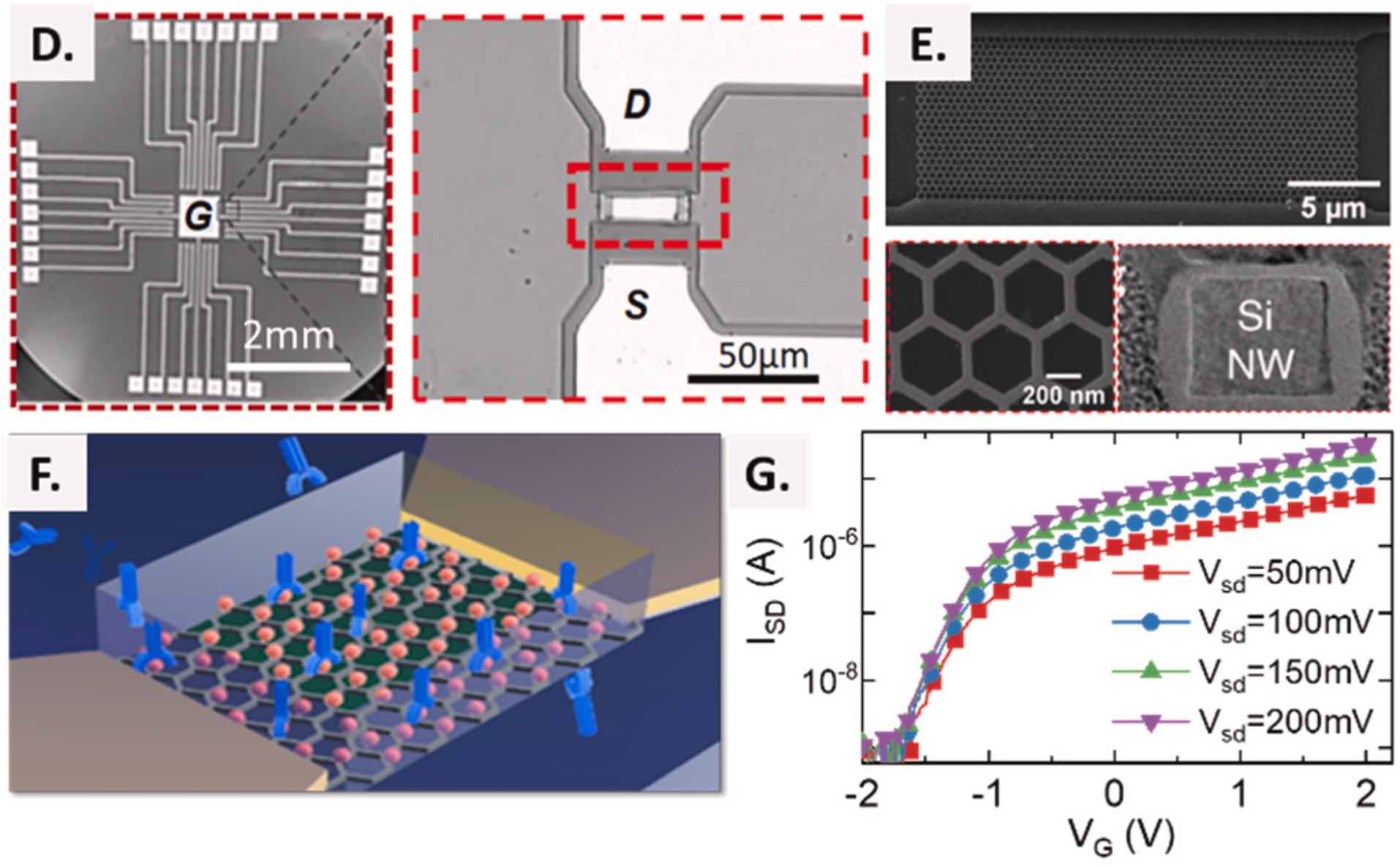



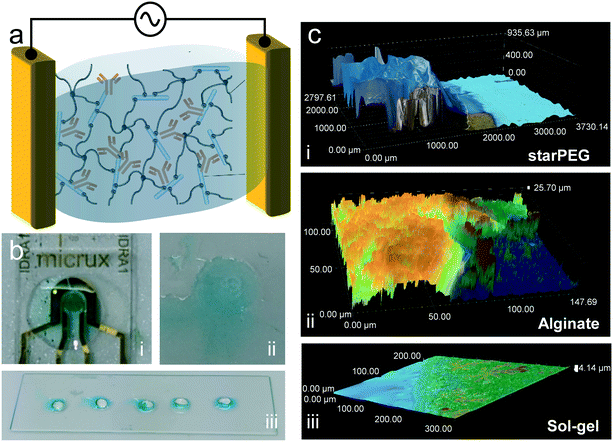

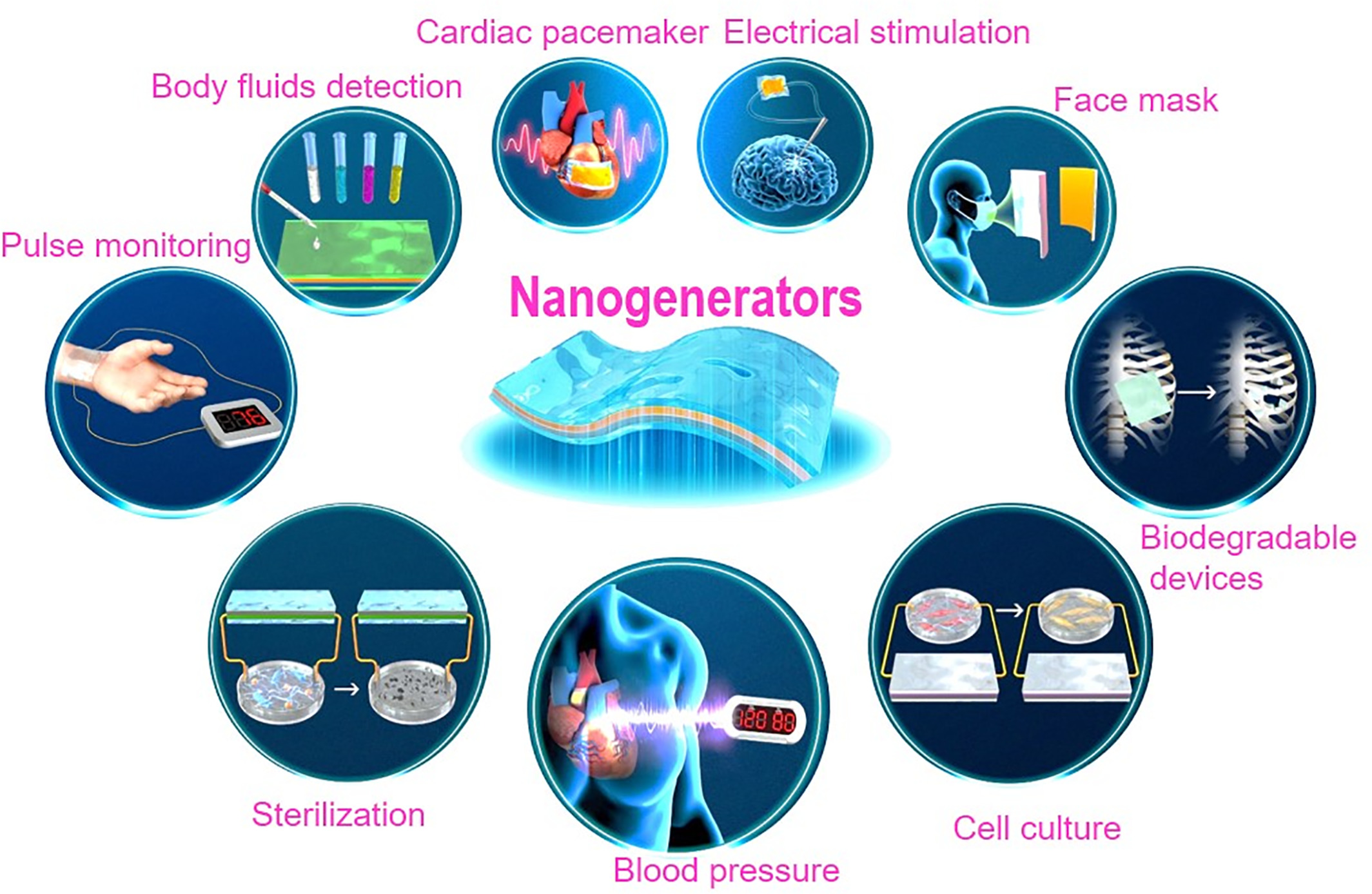

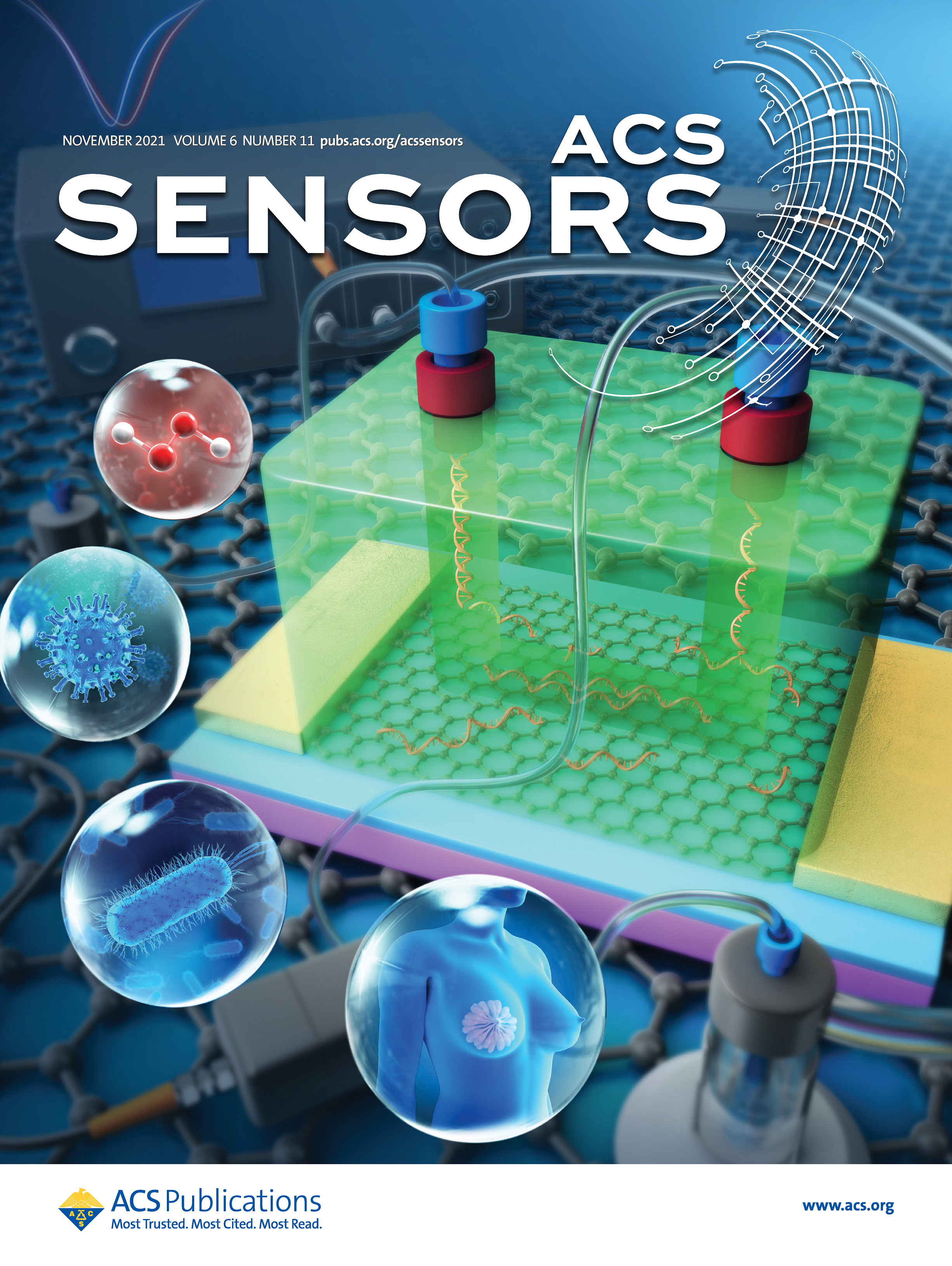



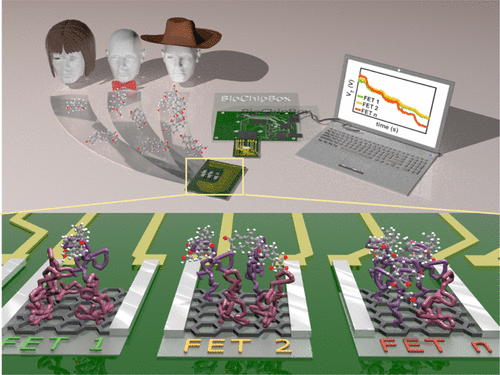

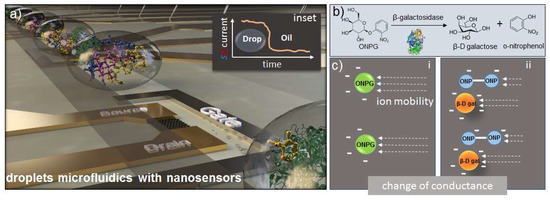



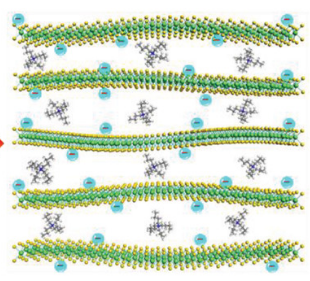



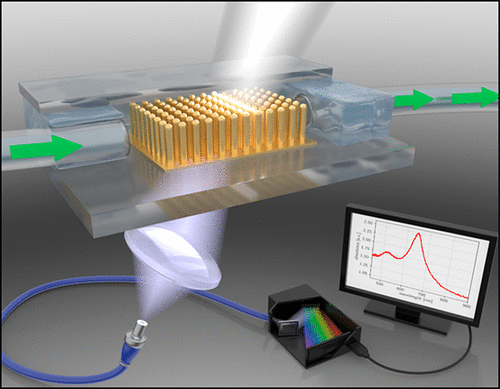

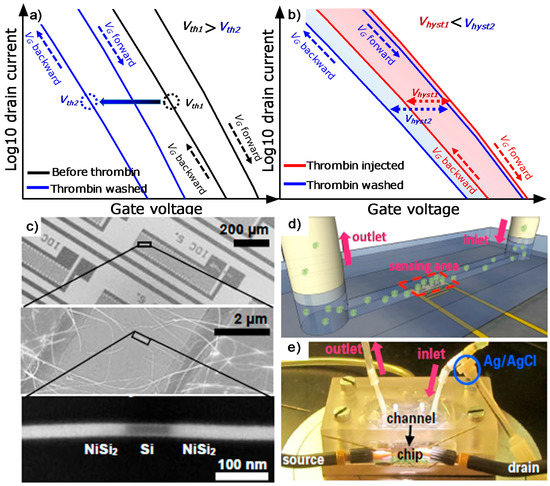

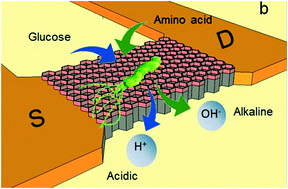

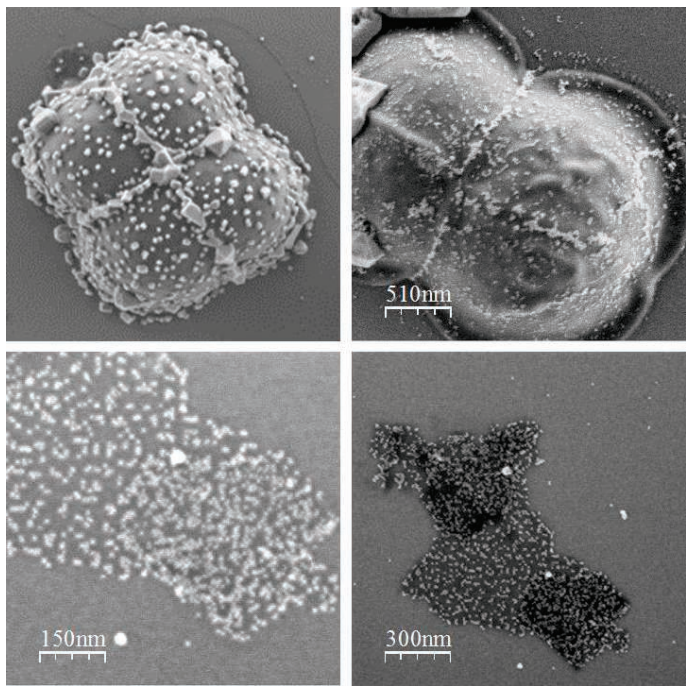

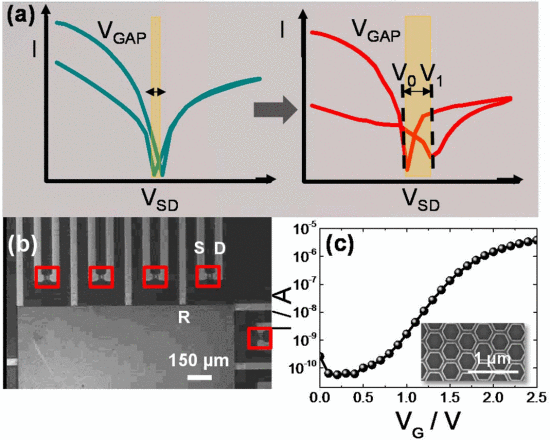

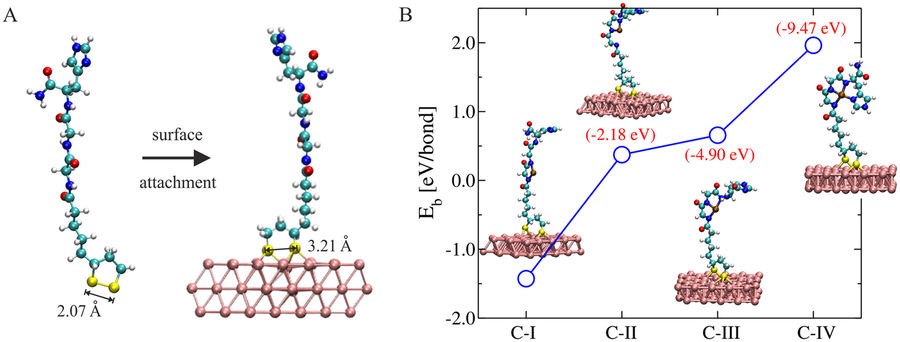

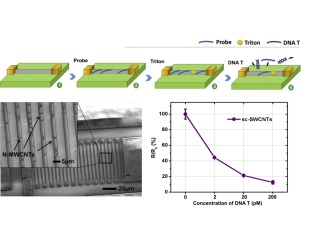

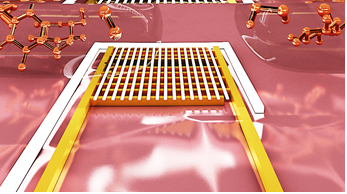

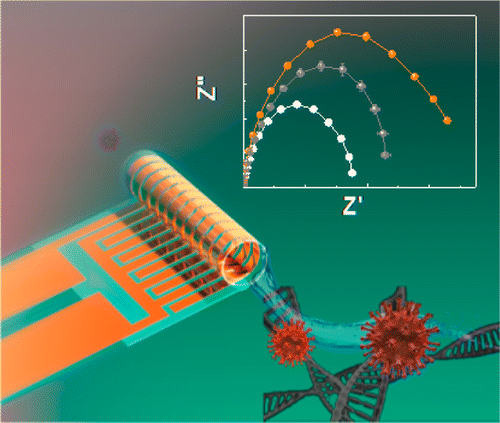

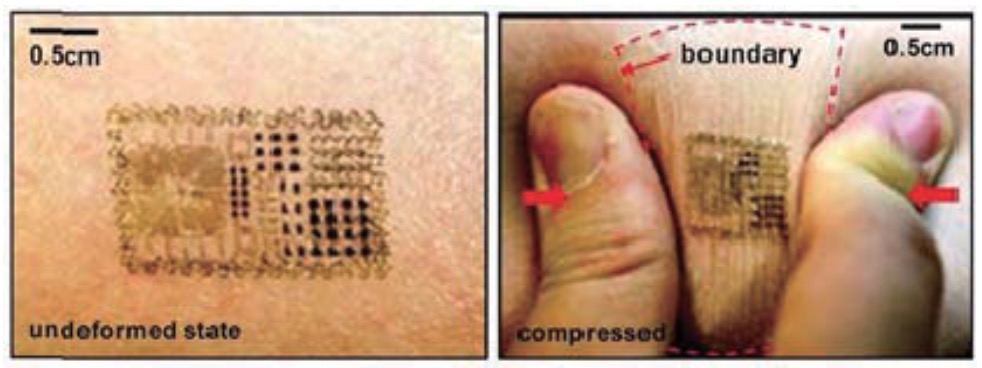



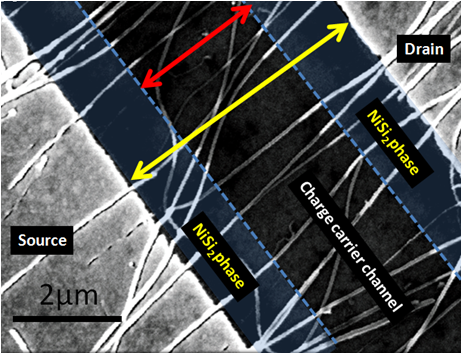

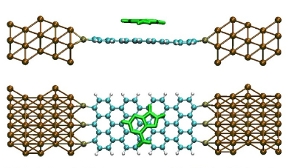

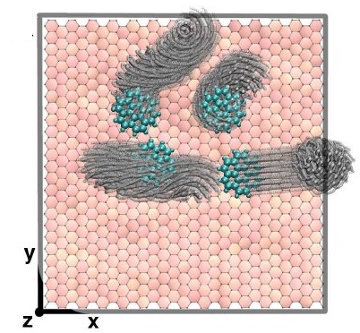




We develop miniaturized, biocompatible sensor platforms that bring cutting-edge nanotechnology into real-world applications. By integrating advanced materials, microfluidics, and smart data analysis, our devices enable label-free, continuous monitoring of biological and chemical parameters—even in vivo. From healthcare diagnostics, such as infectious disease detection, cancer screening, hormone-level monitoring, or stress biomarker assessment, to environmental monitoring, our goal is to transform sensor innovations into reliable, user-friendly tools that make a tangible impact.
The field of sensor development has evolved from early glucose meters in the 1960s to modern point-of-care devices operated by patients themselves. The next step is clear: ultra-sensitive, integrated platforms capable of continuous in vivo measurements.
In our work, we combine top-down and bottom-up fabrication to create nanomaterials and nanostructures serving as highly sensitive transducer surfaces. We employ electrical transduction mechanisms for maximum miniaturization, enabling compact sensor arrays for real-time, label-free analysis.
To ensure performance and applicability, we integrate:
• Materials science for tailored functionality and stability.
• Microfluidics for precise sample handling and parallelized measurements.
• Biocompatibility engineering for safe, long-term operation in biological systems.
By covering the full chain from material synthesis to device validation, we aim to not only detect target analytes but also uncover new sensing phenomena at the nanoscale. Our vision is to bridge laboratory breakthroughs with real-world needs in healthcare, environmental monitoring, and beyond.

What we build
• Electronic sensors: field-effect transistors and chemiresistors based on 1D/2D materials for label-free, continuous readout.
• Electrochemical sensors: impedance and amperometric platforms optimized for portability and multi-sensor arrays.
• Form factors: rigid and flexible substrates; compact integration with microfluidics for controlled delivery, mixing, and parallelization.
How we achieve selectivity & sensitivity
We engineer receptor-functionalized surfaces tailored to specific biomarkers, achieving very low detection limits. We pair this with signal processing, advanced data analysis, and machine learning to boost performance and reliability under realistic conditions.
Ready for the body
A core focus is biocompatibility: we incorporate suitable coatings and materials so sensors can operate stably in biological environments, advancing toward continuous in vivo monitoring while maintaining sensitivity and selectivity.


















































































































































